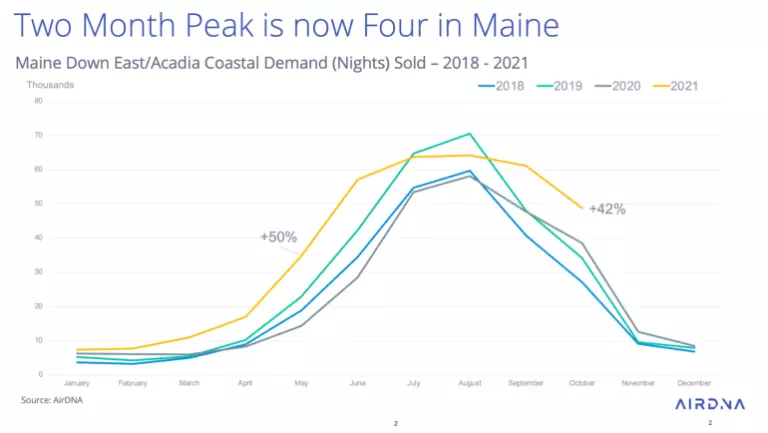One of the best ways you can save money on your next vacation is to avoid peak travel season. However, Norway is not everyone’s idea for a great time.
This is where shoulder seasons come in. These tourist seasons, which fall between peak travel dates, have less crowds, greater availability, and, most importantly – lower prices. This is different from offseason when some businesses and experiences might be closed to visitors.
According to data from Hopper, Maui hotel prices dropped by $365 per person between peak summer and shoulder autumn seasons in 2022. These lower prices can have a significant impact on your overall spending.
The popularity of shoulder season has been boosted by remote and flexible work. AirDNA data, a platform that tracks vacation rental data, shows that the peak demand for vacation rentals has spread to the shoulder seasons during the pandemic.
Not all shoulder seasons are equal. Glacier National Park is a great place to camp in fall. But, by October, low temperatures can reach freezing. Some shoulder seasons are ideal for travel, while others can be dangerous.
Here are the steps to finding a Goldilocks spot.
A good all-year weather resource
Let’s suppose you are planning a trip in Japan but don’t know if the fall or spring offer better weather conditions. To get an idea of the Tokyo’s year-round temperatures, you can search Google. Or, you can do some meteorological research.
Weather Spark is a great resource. Although it’s not intuitive and has ads, Weather Spark provides some very useful data visualizations that help you understand how the weather changes in a specific destination month to month.
Although flight prices are higher in summer, a Weather Spark graph showing Tokyo weather shows that high temperatures and humidity make it a bad time to visit Japan. They both decrease in frequency, but humidity is still high in September and low in May.
Consider the information in the “overcast” section. Clear skies are something you want while traveling. The early autumn offers more than the late summer, despite the more rain in the autumn.
Your personal preferences will ultimately determine the calculation. This is why it is so useful to have all of these data points. You might be able to save money if you aren’t afraid of rain. You can choose the months that you don’t like humidity but love the sun.
Ask questions on forums
Data is not always the best indicator of reality. Checking the weather in Maui (Hawaii) can be very misleading. The island’s microclimates can produce completely different patterns throughout each year. The Bay Area in California is another example, with fog and chill in San Francisco giving way to warm sunshine a few miles away.
It is possible to avoid data-driven disasters by asking someone who has been to your destination, whether it be a friend or a group of strangers via a message board.
An example of a Tripadvisor thread asking about the best time for Japan to visit was this: “October and May following ‘Golden Week” are the best times to visit Japan. They’re not too hot or too cold.
What is this “Golden Week?” It sounds great, right? This week is actually a week for Japanese national holidays and it’s a difficult time of year to travel due to closures and domestic tourists.
Another example is the American West’s Fire Season, which can be very oppressive on the ground despite the ideal weather on paper.
It’s better to consult with someone than rely on data alone. Reddit and Quora are just a few of the other forums you have access to.
Don’t worry
Peak travel seasons are generally that way because they’re the best time to travel. If you choose a shoulder season to avoid crowds and lower fares, you can expect raindrops every now and again, and the occasional typhoon. In Japan, early autumn is the typhoon season.
There are two peak seasons. It’s about choosing the one that best suits your meteorological preferences. Do cloudy days make it a no-go for you? Do you prefer cloudy days for better lighting?
Personal taste is everything.
Don’t allow data from websites such as Weather Spark to make the decision. Your trip can be affected by microclimates, holidays, and other unpredicted variables. Before you start a conversation, ask around or look on message boards. Make sure to bring a raincoat.
Maximizing your Rewards
A travel credit card should be able to prioritize what is most important to you. These are our top picks for the best travel cards in 2023, as well as those that work best for:
